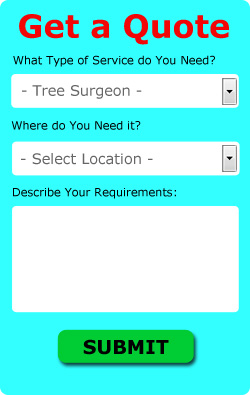London Tree Surgeons (SW1) Greater London: Adding style, structure and substance to what can quite often be a 2 dimensional area, trees are an attractive feature of gardens and properties in London. However, when trees have been neglected or are impacted by extreme weather events such as flooding or storms, problems can develop. The best option if there is work that needs carrying out on your trees, is to consult a qualified tree surgeon in London.
There is a major risk of damaging property, trees or even life, for those in London who try to do tree work on their own, or by employing non-qualified personnel. However, tree work is not altogether safe for certified tree surgeons, who are aware of all the hazards involved with it. Within the profession there are a worrying average of three deaths and 140 major injuries per year, making it among the most dangerous jobs in Britain.
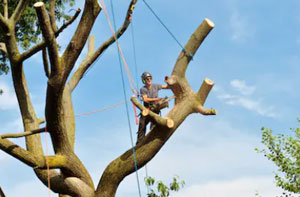
With around 5 people each year being fatally wounded by falling branches or trees in Britain, even a damaged or poorly maintained tree can also present a danger to life. If an injury, or damage to property occurs due to you employing somebody to do tree work, you may well be liable to third-party compensation claims due to the consequences of your actions. These are merely some of the reasons why using a qualified London tree surgeon to carry out the work on your trees is imperative. (Source - HSE).
There are two principal industry bodies, one or both of which a trained London tree surgeon should be a signed up member of. The websites of both the Arboricultural Association and the International Society of Arboriculture allow you to check the membership and professional standing of any tree surgeon in London. This webpage allows you to check whether any particular tree surgeon has recognised Approved ARB Contractor status, and is a member of either of these two bodies.
You'll be able to contact these industry bodies for assistance in arbitration and for help and guidance at any stage, if there's a problem during or after any work has been finished.
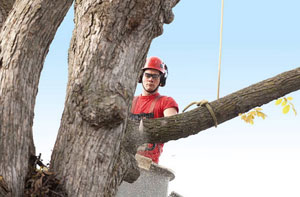
If a tree surgeon who is not on this directory list offers to provide you with an estimate, it is recommended that you carry on with your search for an approved and qualified contractor, and politely decline their offer. It is best to get a minimum of 3 different quotes from various companies in and around London, as soon as you have carefully checked their accreditations and professional memberships. Because of the risks involved in tree surgery work, you should ask the below questions, making it clear that you need the answers:
- Could I contact some former customers to assess the quality of your workmanship? It's recommended that you perform an independent examination of any recent work.
- What level of insurance cover have you got? As stated by the AA and ISA, your tree surgeon should be able to produce an insurance certificate covering a minimum of five million pounds public liability.
- Can you give me a written quotation? Always get a written quote, and NEVER accept a quote that is only given verbally.
- Have you got a NPTC/LANTRA certificate for chainsaw use, and documentary proof of your qualifications and professional memberships? The NPTC/LANTRA is a required certificate in law for any worker/tree surgeon using a chainsaw. Qualifications might include National Diplomas and Certificates in Arboriculture.
Easy to follow information on all the work that's being undertaken should be included on the written quote. It should include details of any trees which may be protected, and the steps necessary to get permission to work on them, and also state whose responsibility it is to remove debris, tree branches and stumps. You should also make sure VAT has been included on the quote unless you are a commercial enterprise. You have a responsibility for hiring only qualified tradespeople to work on your property and trees, and it is crucial to understand that.
PRIOR TO WORK COMMENCING - Making enquiries into the possibility of any trees having protected status, your preferred London tree surgeon should make sure that any work gets the green light from the appropriate local authority department. Even protected trees require maintenance so as to cut back old or dying wood and ensure public safety, so finding a tree has protected status doesn't imply that work cannot still be carried out.
If your property in London is situated within a conservation area, the Local Planning Authority (LPA) will need a minimum of six weeks written notice of any planned tree work. This notice isn't required if the tree stem is less than 75mm in diameter when measured at 1.5m from the ground. Also, if the branches of a protected tree need to be pruned or thinned to encourage and sustain growth, written notice won't be necessary.
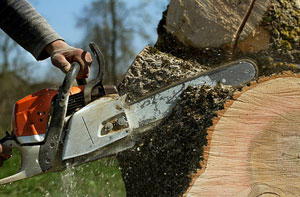
After fully assessing the health of your trees, your London tree surgeon will decide on the appropriate treatments and how the required outcome can best be accomplished. Public areas, your property and any parts of neighbouring properties that could be impacted by falling branches will all be given a full risk assessment. The level of protection needed and the amount of workers required, will also be determined at this point. This is both personal protective equipment (PPE) in addition to other safety measures to keep the public and other property safe from harm or damage.
ON THE DAY OF WORK - Before any climbing, cutting of branches or tree felling begins, safety measures and barriers should be put in place to keep unauthorised persons away from the area of work. If there is any danger of debris falling into a public highway, passing traffic might need to be temporarily stopped.
Varying levels of protection will be necessary for the tree surgeon depending on what tree work needs to be completed. At a bare minimum when doing chainsaw work they will be wearing specialist protective clothing to prevent serious cutting injuries to the legs, hands and torso. Eye and head protection, and high visibility clothing, must be worn by all operatives involved in the work.
If any working at height is involved, ladders and climbing equipment will have to be deployed, and extra workers will be on hand to help in the removal of high branches and heavy pieces of tree trunk. For hauling waste away from the work area, a skip or truck will be parked as close as possible to the area. This need for unhindered access is a good reason to inform your next door neighbours of the work you are intending to do.
UPON COMPLETION OF WORK - All of the waste materials will be transported away and the whole area cleared of any debris, once all the tree work has been accomplished. Your tree surgeon should then sign off and provide you with a certificate of work done, especially where the trees are covered by TPOs. If any public areas required safety measures, this protection will be taken away and roads and paths will be re-opened to the public.
If you have any complaints about the work, you should get them rectified immediately by firstly speaking to your tree surgeon. If there is any further dispute, and your tree surgeon is a member of a professional association, you can obtain advice and help from the AA or the ISA in order to come to an acceptable conclusion.
Leylandii Hedge Removal
Many residents in London prefer Leylandii hedges for their rapid growth and privacy benefits. Yet, they have the tendency to grow excessively and become challenging to manage. If you are planning to remove a Leylandii hedge, there are several crucial factors to take into account. The primary consideration is to ascertain that the hedge isn't shielded by any legal provisions, including a Tree Preservation Order. In the event that the hedge is safeguarded, you will require permission from the local council before proceeding with its removal. In addition, Leylandii hedges can possess deep-rooted systems, underscoring the importance of engaging a certified tree surgeon to remove both the hedge and its roots safely. Finally, once the hedge is removed, you'll need to dispose of the waste responsibly. All in all, removing a Leylandii hedge can be a risky and protracted endeavor, making it crucial to take the necessary safety measures and seek out qualified help if required.
Tree Surveys London
There are a number of occasions when tree surveys may be required, land development and property extension being the most frequent. If, for example, you happen to be clearing some land in London to make space for a new house or an extension to an existing property, and there are trees on that land, you will need to perform a professional tree survey to British Standards BS5837 (2012). Tree surveys in London should be conducted by a certified arborist or tree surgeon, and this applies whether the survey is being undertaken on either a private or public property.
Within the specified area, a properly done tree survey will glean a broad range of information about all of the trees. For example:
- The existence of any TPOs.
- The allocation of a unique reference number for each of the trees.
- The diameter of each tree (taken 1.5m above ground level).
- The structural and physiological health of the trees.
- The predicted life expectancy of the trees.
- The ages of the trees.
- The number of trees.
- The branch spread to West, East, North and South.
- The height of each tree in metres.
- Recommendations for tree management.
- The species of trees (either common or scientific).
If you happen to be doing work on an existing home in London but you aren't extending the footprint of the building and aren't modifying the service lines or access points, a tree survey probably won't be required. (Tags: Tree Survey London, London Tree Surveys, Tree Surveyors London, Tree Surveys London).
The Skills to be a Tree Surgeon in London
- Have essential computer skills and know how to complete tasks on handheld devices.
- Be professional and capable of completing tasks within a given timeframe.
- The ability to work alongside other people.
- Be patient and have the ability to stay calm in stressful circumstances.
- Be able to work with your hands.
- Good knowledge of public safety and security.
- Have the ability to use, repair and maintain tools and equipment.
- Be alert to the complexities and dangers involved in all areas of tree work.
- To be meticulous and pay close attention to detail.
- Excellent customer skills.
- Physical skills like co-ordination and movement.
A Tree Surgeons's Daily Tasks
- Climb trees to remove or prune branches.
- Work with customers and complete administration tasks.
- Prepare tree survey reports for commercial and domestic customers.
- Cut and chip logs and branches.
- Prepare telephone or on-site price quotes for customers.
- Service equipment like chainsaws and wood chippers.
- Evaluate tree health and treatment.
- Tree planting and transplanting.
- Clean up site on completion and remove waste products from client's site.
- Be adept with power tools and powered machinery.
- Fell and remove trees and perform stump grinding.
- Establish dangers presented by trees.
Storm Damage Prevention London
Although we are all aware of the power of Mother Nature, larger trees seem strong, sturdy and able to withstand pretty much anything. Actually some types of tree can live for several hundred years.
Despite all this, trees can be susceptible to adverse weather, and aside from the risk of falling tree limbs and branches, when faced with certain conditions trees can even topple over completely, causing lots of damage or even death. The principal danger to, and enemy of trees, is high winds, and with the increasing frequency of violent storms and extreme weather events this type of damage is becoming more common in London. Extended periods of rainfall or flooding may cause the soil around roots to become saturated, which is another problem for larger trees, as is heavy snowfall during wintertime.
So as to be ready for any problems that might arise during severe weather conditions, it's advisable to have a qualified London tree surgeon trim and remove any dead, dying or overhanging branches, and check for any further issues.
To prevent larger trees being struck by lightning, and to protect nearby property and buildings which may be susceptible to side-flashes ("arcs"), it's also recommended to fit them with copper conductors, lightning rods, or other protection systems. Lightning strikes can drastically weaken trees, meaning that they're more vulnerable to pest attacks or disease, and even kill them altogether in some cases. Lightning is more common than you may think, and there are approximately three hundred thousand lightning strikes each year in the UK alone.
If you are anxious about the possibility of storm damage to your trees in London, you should ask what your local tree surgery company can do to protect them, and minimise the risk of mishaps happening.
Tree Removal London
Sometimes, taking down a tree is a must, particularly if it's become unsafe, infected with disease, or has simply outgrown its surroundings. While trees are important to the environment, they can also pose risks to nearby properties and people. Hazards such as overhanging branches or root issues might make it necessary to consider removal. It's not a choice to rush into, but when it's required, it can enhance both safety and how you use your outdoor space in London, providing greater peace of mind.
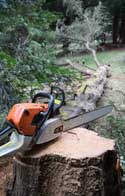
Tree removal might not be as easy as it appears, especially when dealing with those larger trees. It demands thoughtful planning and having the right tools to ensure the job is carried out safely and efficiently. That's where professional tree surgeons come in; they have the expertise to analyse the tree and decide on the most effective removal technique while keeping the surrounding area intact. They also take care of getting rid of the tree afterwards, sparing you from any extra hassle. If you consider doing it on your own, keep in mind it can be quite dangerous, so enlisting an expert is usually the safest option for tricky or large jobs.
After a tree has been taken out, your outdoor space opens up to exciting new possibilities. The extra sunlight can be great for nearby plants, and that freed space could become a fantastic new addition - think patio, a driveway, or even a charming garden feature. Whether you're considering this for safety reasons or just to reimagine your garden's layout, when tree removal is done with thoughtfulness, it can really elevate your London garden or outdoor area, making it a more enjoyable space for years down the line. (Tags: Tree Removal London).
Problems With Tree Roots London
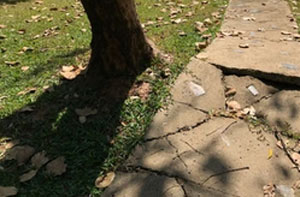
When they are growing too close to your home in London, some trees have exceptionally invasive roots, and can be troublesome. Issues that can occur include damaged foundations, blocked drains and cracked patios. Some species of trees that have very invasive roots include sycamores, willows, maples and elms.
Keeping any new trees you plant, as far away as possible from your house, patio areas, your drainage system and paths, is recommended to avoid future challenges. You must bring in a tree surgeon in London, to see what can be done, if existing trees are growing too close to your house and are causing one or more of these problems.
You definitely should not attempt to solve this yourself by simply hacking off the offending tree roots, as this could significantly affect the tree's health or even kill it in some cases. Understanding which roots should be left in place, and which roots can be cut back is the realm of the expert, and a seasoned London tree care specialist will ensure that the tree is still able to get ample water and nutrients to survive successfully for many years to come.
Because sewer pipes provide a constant source of moisture and nutrients, tree and shrub roots often cause structural problems in underground drainage systems. Minute tree roots can quickly grow into a drainage system's joints, and once established grow into enormous root balls which can lead to joint failure and blockages. Many London tree surgeons will provide professional root removal services, which will either involve using mechanical equipment, manual rodding or high pressure water jetting. You can also access root removal services in Southwark, Waterloo, St James's, Mayfair, Islington, Belgravia, Knightsbridge, Hackney, Covent Garden, Havering, Camden, Brent, Haringey, Pimlico, Shepherds Bush, Vauxhall, Victoria, Kensington, Waltham Forest, Whitehall, Churchill Gardens, and in London, Greater London. (Tags: Problematic Tree Roots London, Tree Root Problems London, Drain Root Removal London, Invasive Tree Roots London).
Dutch Elm Disease
Although Dutch Elm Disease (Ophiostoma novo-ulmi) isn't quite the concern that it was at one time, during the past 50 years or so it has killed off many millions of elm trees all over the United Kingdom. Accidentally imported into the British Isles from Canada in the late Sixties, DED (Dutch Elm Disease) is spread by the elm bark beetle (Scolytus) and caused by the Ophiostoma novo-ulmi fungus.
Its rapid spread was attributed mainly to elm products such as saplings, mulching bark, elm crates, and logs with the bark on, being transported throughout the United Kingdom. Thought to have originated in Asia (probably Japan), Dutch Elm Disease did not only affect trees in the British Isles, but also ravaged elm stocks in continental Europe, North America and New Zealand.
The first symptoms of DED are:
- Twigs with spots or rings in cross-section.
- Clusters of yellow leaves that wilt and then fall.
- Twigs turning into a "shepherd's crook".
- Shoots that die back from the tip.
It typically begins to appear in early summer.
The spread of DED has been slowed by the felling of dying, infected and dead trees, which has effectively removed the beetle's favourite habitat. There's currently a continuing project for the propagation of young elms which are so far resistant to DED.
You can get in touch with your local tree surgeon for guidance and advice, if you suspect you might have affected elm trees on your property in London, or you could put in a request for a diagnosis from the Tree Health Diagnostic & Advisory Service (THDAS), for which you will be charged.
(Tags: Symptoms of Dutch Elm Disease, Dutch Elm Disease London, Spotting Dutch Elm Disease).Crown Thinning London
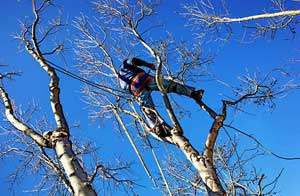
The removing of a lot of the smallest branches at the tree's outer crown to create a density of foliage that's consistent throughout without transforming the size or shape of a tree, is termed crown thinning. Such a tree work is usually only done on broad leafed trees and is to prevent the tree from uprooting in windy weather, to ease the stress put on specific limbs caused by snow, ice, wind, or gravity, to decrease the overall weight of the crown, to decrease the tree's wind resistance or to enable more sunlight throughout. A uniform foliage density encompassing uniformly distributed branches should be the aim of crown thinning, it should not alter the all round size and shape of the tree. You will be able to obtain crown thinning services in Southwark, Waterloo, St James's, Mayfair, Islington, Belgravia, Knightsbridge, Hackney, Covent Garden, Havering, Camden, Brent, Haringey, Pimlico, Shepherds Bush, Vauxhall, Victoria, Kensington, Waltham Forest, Whitehall, Churchill Gardens, and the London area.
Tree Surgery Tasks London

London tree surgeons will likely help you with felling of storm damaged trees, drop crotching, monitoring of tree health, root decompaction, landscaping, tree transplanting, shrub maintenance, eco-plugging, crown cleaning, crown lifting, damage restoration, root removal, vegetation management, crown reduction, waste removal in London, tree cutting, forestry management, hedge lowering, tree topping, tree watering London, crown raising, hedge reduction in London, tree pollarding, cabling, tree fertilising London, brush cutting services, commercial tree care, tree maintenance, woodland management, tree planning, tree pruning in London, hazard assessment, staking, tree care, stump removal and other tree surgeon services in London, Greater London. Listed are just a few of the tasks that are performed by local tree surgeons. London specialists will be happy to tell you about their full range of services.
Tree Surgeons Near London
Also find: Victoria tree surgeons, Mayfair tree surgeons, Haringey tree surgeons, Hounslow tree surgeons, Waltham Forest tree surgeons, Pimlico tree surgeons, Croydon tree surgeons, Bromley tree surgeons, St James's tree surgeons, Churchill Gardens tree surgeons, Islington tree surgeons, Bexley tree surgeons, Covent Garden tree surgeons, Barnet tree surgeons, Camden tree surgeons, Greenwich tree surgeons, Knightsbridge tree surgeons, Vauxhall tree surgeons, Waterloo tree surgeons, Kingston upon Thames tree surgeons, Shepherds Bush tree surgeons, Havering tree surgeons, Kensington tree surgeons, Southwark tree surgeons, Belgravia tree surgeons, Brent tree surgeons, Whitehall tree surgeons, Hackney tree surgeons and more. All of these towns and villages are covered by professional tree surgeons. Local home and property owners can obtain quotes by going here.
(Created with tree surgeons London text version four.)
More: Crown Cleaning, Tree Watering, Tree Management, Eco-Plugging, Soil Terraventing, Tree Felling, Crown Reduction, Hedge Planting, Tree Cutting, Root Grinding, Wood Chipping, Woodland Management, Vegetation Management, Root Decompaction, Hedge Planting, Site Clearance, Tree Management, Tree Lopping, Crown Raising, Vegetation Management, Stump Treatment, Crown Reduction, Tree Watering, Site Clearance, Root Grinding, Tree Planning, Stump Treatment, Vegetation Management, Tree Maintenance, Vegetation Management.
Tree Surgeons London - Forest Management London - Tree Reshaping London - Tree Surgeon London - Tree Surgery London - Tree Management London - Tree Care London - Stump Grinding London - Tree Surgeons Near Me

